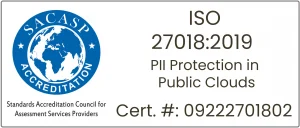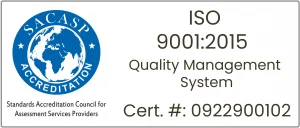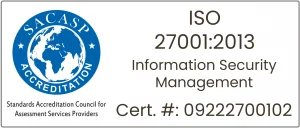Traverse the article
The regulatory regime is a real challenge for investment and asset management firms, specifically concerning the complexity of Single Customer View (SCV) reporting requirements imposed by the FSCS. Unlike deposit-taking institutions, complexity in dealing with multiple asset classes, disparate data systems, and subtle regulatory interpretation poses a peculiar burden. This blog examines the challenges of the asset management industry in SCV reporting and how it can transform the reporting process for increased efficiency, precision, and eventually better regulatory compliance.
Navigating the Asset Management Minefield: Scenarios and Challenges
The asset management industry, although not considered high-risk for depositor protection, has its own challenges, which are compounded by the operational and data environments that exist within these companies.
Scenario 1: Large Number of Customers/Net Worth of Customers
Asset management companies often have a large number of client accounts, typically serving high-net-worth individuals or institutional investors. Timely and accurate SCV reporting is essential in case of firm failure.
Challenges Faced
- Overwhelmed Legacy Systems: Most asset management companies were not built to support the high volume and complexity of data necessary for SCV reporting, finding it difficult to process the sheer volumes of accounts and transactions within the tight 24-hour deadline imposed by the FSCS.
- Manual Error-Prone Processes: Some systems may also require manual data extraction, transformation, and collation, posing a high risk of human error and leading to erroneous or incomplete SCV reports and risk compliance.
- Inadequate Customer Data: Although companies possess detailed investment data, the precise customer data needed for SCV, including full contact details and identification data across all accounts, can be fragmented or incomplete, particularly for long-standing customers or those with complex holding structures.
- Duplicate Data: Having many accounts can result in duplicate data, especially when customers have multiple accounts on different service lines or platforms. Finding and clearing these duplicates within the SCV reporting period is a major challenge.
- Inaccurate Account Holder Data: It is a challenging task to ensure the accuracy and uniformity of account holder data in multiple records. Variation in names, addresses, or other identification details may contribute to errors in reporting and compensation payments.
Scenario 2: Different Kinds of Services
Asset management companies tend to provide a range of services, from advisory guidance to trading on behalf of clients (discretionary) or merely facilitating client-directed transactions (execution only). These offerings demand unique data requirements for SCV reporting.
Challenges Faced
- Complex Operations: The firms grapple with disparate systems, each customised to individual service lines. This results in a lack of unified system knowledge among employees, preventing effective data retrieval for reporting. Infrastructure complexity further exacerbates the problem, making it challenging to consolidate data from these diverse sources within the tight SCV timeframe.
- Fragmented Client & Account Data: Account configuration, essential for ascertaining the eligible deposits, is typically system-specific and inconsistently recorded across systems. This siloed strategy creates poor data correlation, rendering it challenging to establish a comprehensive and accurate customer view.
Scenario 3: High Potential Regulatory Scrutiny
Companies holding large assets or serving customer segments are subject to strict regulatory surveillance. This is because such companies have the possible systemic effect of influencing the general financial environment, as well as the susceptibility of their customers. Therefore, the demand for proper and timely SCV reporting is considerably higher.
Challenges Faced
- Operational Fragility: The older infrastructures tend to be less capable of handling the pressure of producing on-time and reliable SCV reports, particularly in the face of ad-hoc requests from regulators. There lies an innate inflexibility in extracting data from these systems, resulting in operational inefficiencies.
- Data Integrity Risks: Inaccurate information about account holders and customers, which lies across systems that are different and possibly out of date, directly risks compliance. Misidentification of qualifying depositors or the exact value of their covered assets can result in regulatory requirements being breached.
- Data Privacy Issues: Compounding this concern are the risks of data protection and privacy tied to ineffective data governance structures, rendering the safe and proper treatment of sensitive client data an over-riding issue under increased examination.
Scenario 4: Data Complexity Due to Siloed and Multiple Systems
Most asset management companies use a patchwork of systems to deal with their wide-ranging operations. Portfolio management systems, trading platforms, CRM software, and custody systems tend to function in isolation, making SCV reporting extremely challenging.
Challenges Faced
- Infrastructure Complexity: IT staff are saddled with the responsibility of creating and managing connections, frequently involving custom integrations that are time-consuming and resource intensive. Besides, the lack of a single data environment requires manual data consolidation from these disparate sources.
- Poor Data Aggregation: The key customer and account data are in silo systems, resulting in incorrect account data and greater potential for errors when reporting. Duplicate data, which arise because of inefficient data handling due to absence of a centralised database, also make the reporting process cumbersome and may result in exaggerated or incorrect SCV submissions.
Scenario 5: Legacy Systems/Inefficient Bespoke Systems
Much of the asset management industry remains on aging systems or legacy bespoke solutions that are inefficient. These systems, which were installed years ago, are not in line with the precise data needs and tight deadlines demands of the current regulatory reporting.
Challenges Faced
- Operational Bottlenecks: The absence of modern APIs and data extraction functionality compels companies to use manual mechanisms for extracting and manipulating data. Additionally, the institutional knowledge necessary to run and extract data from these old systems can be localised in some individuals, leading to a point of failure and impeding scalability.
- Data Quality Shortfalls: The data fields necessary for SCV reporting are absent or inconsistently filled. In addition, account configurations in the older systems will likely not be compatible with present regulatory standards, resulting in inappropriate reporting of eligibility and compensation values. The intrinsic challenge of extracting and converting data from such systems also maximises the risk of non-compliance.
Building a Fortress of Efficiency: Robust Data Governance to Drive FSCS SCV Reporting in Asset Management
For asset management and investment firms, ensuring effective and compliant SCV reporting requires a strategically effective approach to data governance. It means viewing data as an asset, assuring its quality, accessibility, and reliability through the reporting lifecycle.
Building a Strong Data Governance Structure
- The effective SCV reporting requires clear, defined roles and responsibilities for data ownership and accountability throughout the organisation, commonly aligned to specific systems or data domains.
- This can be enforced through access controls, data lineage tools, and audit trails for monitoring data changes.
- Moreover, imposing rigorous data quality rules with measurable metrics (e.g., completeness, accuracy, consistency, timeliness, validity) and using automated monitoring procedures are necessary.
- Lastly, a centralised data dictionary and lineage tracking mechanism gives total visibility into data elements and their movement, supporting traceability and impact analysis.
Breaking Down Data Silos with Aggregation
- Good SCV reporting involves resolving those silos with strong data aggregation strategies.
- This involves the use of ETL (Extract, Transform, Load) processes to pull metadata from heterogeneous sources such as portfolio management systems, trading platforms, custody solutions, CRM, excel files, CSV files, text files, and other external files.
- Contemporary data warehousing offerings, based on scalable databases or cloud infrastructures, offer a centralised repository for this aggregated data, tuned for reporting and analysis.
- Having a single view of customer and account data requires utilising algorithms to recognise, match, and unite records of the same customer in different systems, building a precise customer profile and streamlining the production of the required SCV outputs.
Ensuring Data Integrity and Accuracy
- Data integrity and accuracy are maintained by implementing data validation checks and rules at data entry points and throughout processing streams.
- These rules, typically defined with business rules engines and database constraints, avoid introducing incorrect data and raise exceptions.
- Routine data reconciliation processes, preferably automated, match datasets in source systems and the central repository and flag and reconcile discrepancies based on rules and workflows.
- The challenge of duplicate data necessitates leveraging deduplication techniques, using algorithms that recognise and merge or eliminate redundant records based on defined matching criteria, from basic exact matching to more sophisticated fuzzy logic.
Prioritising Data Cleansing and Enrichment
- Data needs to be cleansed and enriched to the level of SCV requirements. This entails finding and fixing inaccurate, incomplete, or inconsistent data, typically by a combination of automated cleansing processes to address formatting errors and missing values and manual review by data stewards.
- Enhancing customer data with information important for SCV reporting, like regulatory classifications or eligibility indicators, can include integrating with external data sources or using data transformation rules.
Automating Validation using Third-Party APIs
- Using external APIs provides a strong means of automating data validation against trusted sources.
- Integrating with third party datasets such as the UK Postcode database, FCA registration records, Companies House, and Charities House enables real-time checking of customer and account data, including identity, address information, excluded customers or accounts, and account status.
- Inconsistencies or mismatches between the SCV report data and these third-party databases identify the high-risk, medium-risk, and low-risk items within customer profile, alarming the stakeholders for timely investigation and correction.
- Automating account status, eligibility condition, and regulatory compliance checks through these APIs, along with internal rule engines, saves a lot of manual effort and increases the accuracy of data, ensuring FSCS compliance and reducing the risk of penalties.
Streamlining Reporting with Automated Processes
- Automating report generation and submission is the final step toward effective SCV reporting.
- Integrating workflows for review and approval in the reporting process facilitates control and responsibility.
- In the end, automation saves a great deal of time needed to prepare and file reports, lessening the chance for non-compliance and saving precious resources.
How an SCV Suite Addresses Key Challenges
The All-in-One SCV Suite appears to be a powerful solution that combines innovative technology with tested methodologies to simplify the process of FSCS SCV reporting while improving data management practices through the following ways:
- Unified Data Aggregation: The suite brings together data from multiple Customer Banking Systems and platforms, doing away with data silos and improving access to vital information for FSCS reporting.
- Automated Mapping to FSCS Requirements: Smart mapping of data against FSCS reporting requirements, reducing manual error and ensuring regulatory compliance.
- In-Built Data Validations and Cleansing Features: AI-based algorithms detect errors, duplicates, and inconsistencies within data sets, maintaining high standards of data quality.
- Simplified Reporting Generation and Secure Submission: Automated workflows provide instant compilation and submission of SCV reports for secure transmission to the regulatory agency.
Advantages for Asset Management Companies
- SCV Suite automates reporting, minimising the efforts of staff on strategic activities.
- Strong validation and cleansing functions improve data accuracy, reducing compliance violations.
- SCV Suite eliminates delays in aggregating data and generating reports, allowing companies to fulfil regulatory timescales efficiently.
- Robust governance capabilities enable data lineage tracking, transparent audits, and role-based access controls.
- Less compliance work can optimise cost and free up resources for business growth opportunities, investments in technology, and improved customer service capabilities.
Final Thoughts
Macro Global’s SCV Enterprise Suite, comprised of SCV Alliance and SCV Forza, is a strategic financial investment for asset management firms, addressing the challenges faced by them. It is specially developed to meet the specific requirements of FSCS Single Customer View reporting with a comprehensive solution combining high-quality data management with sound compliance capabilities.
The SCV Enterprise Suite increased compliance preparedness by mapping to FSCS requirements automatically, centralised data integration, fast report creation, strong data management features, AI-powered validation, complete audit and governance with175 Well-Classified Audit Checkpoints, role-based access control, and smooth integration with 10+ external databases.
The suite also supports integration with tools such as SSIS and Power BI, allowing for advanced reporting and analytical features. These advantages boost operational efficiency of asset management and investment firms, redirecting them to growth initiatives, technology investments, and improved customer service capabilities.
Talk to our consultants and prepare your organisation's regulatory compliance roadmap
Book a Free Consultation
Future-proof your regulatory reporting. Invest in an all-in-one SCV suite for enhanced data governance, accuracy, and scalability.
Contact us to learn more.
Related Posts
Navigating the Future of Digital Wallets Amid Big Tech Challenges
Discover how Digital Wallets are transforming payments, the challenges they face, and what the future holds for secure digital transactions.
Defining Your Regulatory Roadmap: Technology, Data Compliance, and Security
Create a sustainable compliance strategy that positions your FI's for long-term success. Learn how to anticipate regulatory changes, leverage technology, and build a resilient compliance framework.
The Power of Open Banking: Transforming the Neo Banking Landscape
Explore how Neo banks, leveraging Open Banking, are empowering consumers with greater financial control, transparency, and convenience.




















